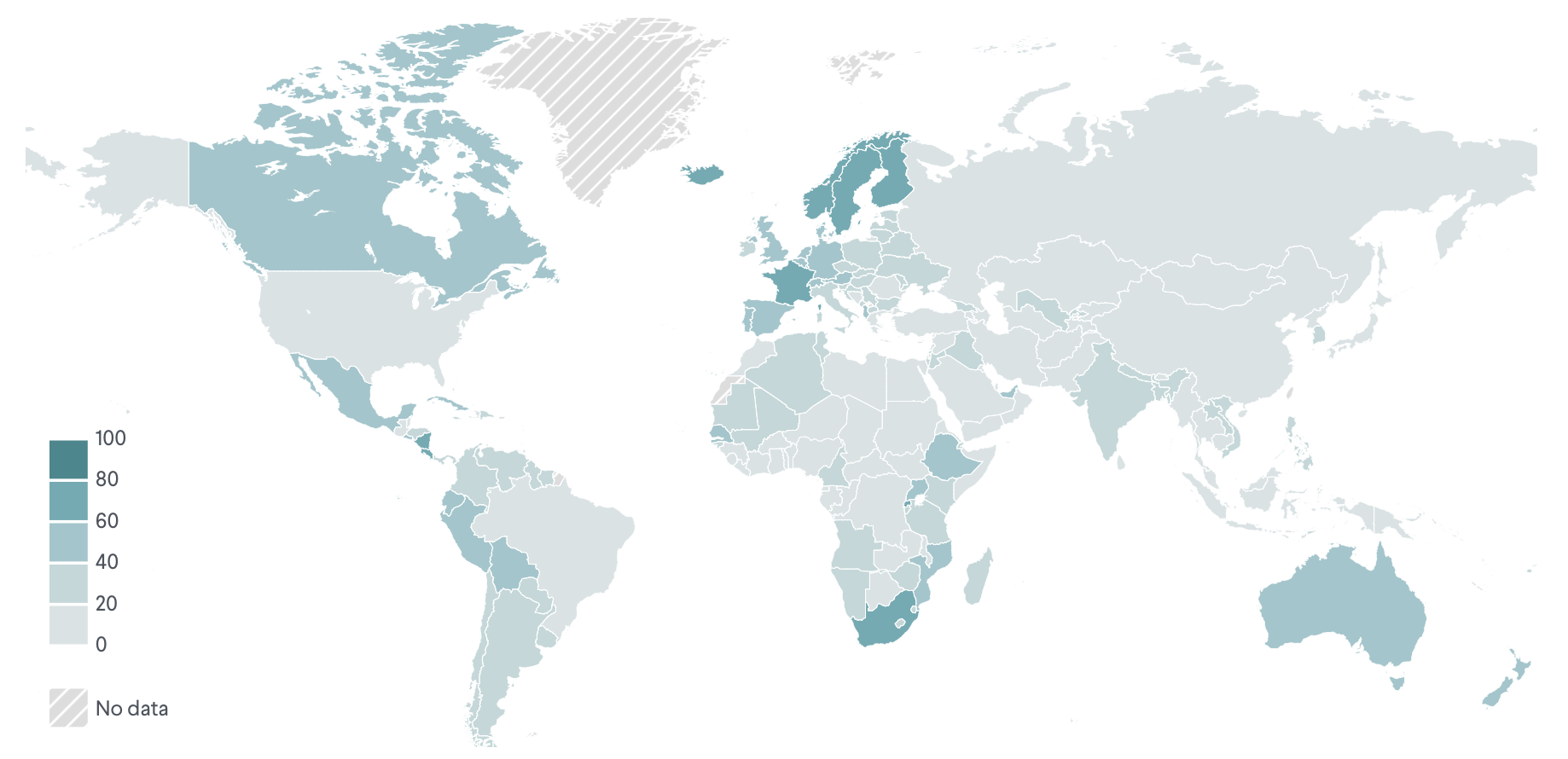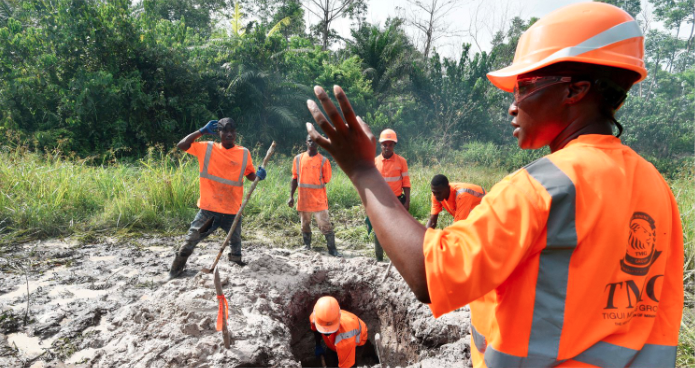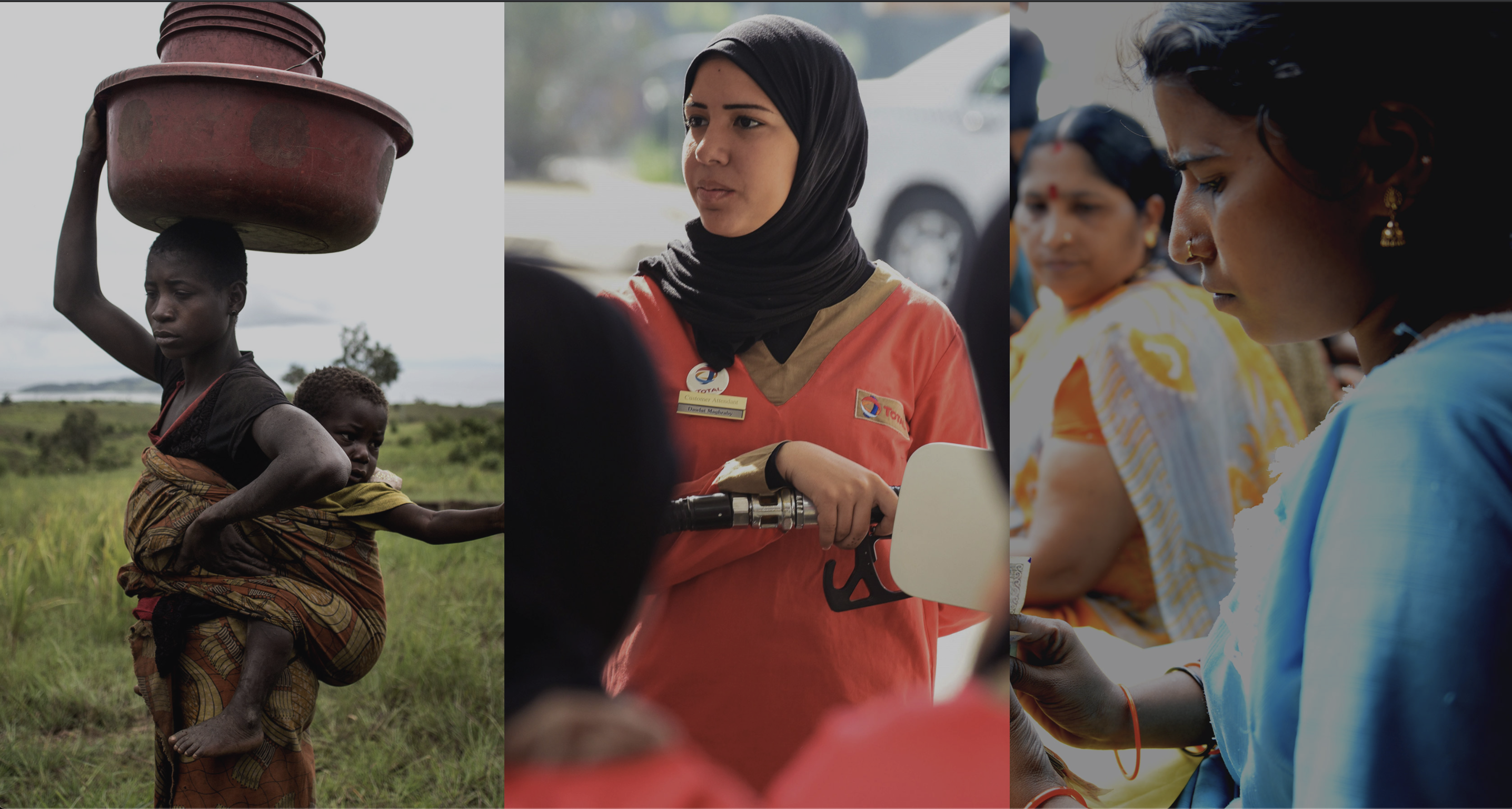In multiple rounds of peace talks, women’s official participation in Yemen has been low. No women participated in negotiations for the 2019 Riyadh agreement or in subsequent ceasefire negotiations on this track. In the negotiations leading up to the 2018 Stockholm agreement, women made up just 4 percent of delegates, compared to 12 percent of delegates in the 2016 talks in Kuwait (with no women in the Houthi delegations). Although the Yemeni Constitution outlines a 30 percent quota for female participation in government, Yemen’s former president, Abed Rabbo Mansour Hadi, transferred his powers to an all-male presidential council in 2022.
Women in civil society have worked across political and sectarian lines to influence the peace process, including through the Yemeni Women Pact for Peace and Security. Women have supported local security efforts, including by facilitating humanitarian access, assisting in the release of detainees, combating child marriage, and leading the reintegration of child soldiers. However, the Ansar Allah group, or “Houthis,” who control most of the country, have placed severe restrictions on women, limiting their ability to participate in public and political life. Women must follow strict dress codes and largely cannot travel without a male chaperone. They have also been prevented from mixing with men in public spaces.
Yemen continues to be devastated by fighting between government loyalists and Houthi rebels that was sparked by the 2011 uprising that removed President Ali Abdullah Saleh from office and transferred power to his deputy, Abd Rabbuh Mansour Hadi. As Hadi’s transitional government struggled with corruption and dysfunction, ethnic Houthi rebels from northern Yemen exploited the central government’s weak influence and in 2014 seized Sanaa, the capital, and forced Hadi to flee to Saudi Arabia. In March 2015, a Saudi-led multinational coalition launched an aerial campaign against the Shia Houthis and their allied forces, who are reportedly supported by Iran and aligned with Saleh. In November 2017, the Houthi-Saleh alliance collapsed, and Saleh was killed as Houthi fighters sought to establish full control over the capital. Nearly four hundred thousand people have since lost their lives. Air strikes and ground fighting account for an estimated 40 percent of this figure; the remaining 60 percent of deaths have resulted from hunger, lack of healthcare, and unsafe water. There are an additional 4,300,000 internally displaced people within Yemen, and the country is also home to an estimated 100,000 refugees from Somalia and Ethiopia, with the real number likely even higher.
Yemen’s economy and infrastructure have collapsed, with more than 80 percent of the total population living below the poverty line and roughly twenty-three million—73 percent of the Yemeni population—relying on humanitarian aid to survive. Women and girls make up 49 percent of this need. Violence against women and girls has reportedly increased in recent years, and rounds of UN-brokered negotiations between the government and rebel forces have failed to move the country toward a peaceful resolution. In October 2019, the Yemeni government and the Southern Transitional Council (a southern separatist group that formed in 2017 and seized Aden in 2019) signed a peace agreement after negotiations hosted by Saudi Arabia. The agreement was breached as the Southern Transitional Council declared self-rule in Aden in April 2020. Later, in April 2022, the UN negotiated a temporary truce between all parties to halt offensive military operations, which is largely being adhered to today. Furthermore, recent negotiations in Geneva have led to a prisoner swap between the Yemeni government and the Houthi rebels, which is inspiring hope for a permanent ceasefire.
Although Yemeni women played an active role in the protests that resulted in the ousting of Saleh in 2011, led most visibly by Nobel Peace laureate Tawakkol Karman, they have been largely excluded from recent peace negotiations. In the multiple rounds of talks and agreements since 2011, women have had little to no representation, with the exception of the 2013–14 National Dialogue Conference, in which 29.4 percent of the 565 delegates were women. Women have had almost no official roles in the UN-brokered talks, either. Just one of the thirteen delegates to the 2011 Gulf Cooperation Council–brokered agreement was a woman, and no women participated in the process leading to the 2014 Peace and National Partnership Agreement. In 2015, Houthi officials blocked the director of the Women’s National Committee—the government body responsible for women’s affairs—from traveling outside Yemen to attend negotiations.
Since 2015, however, women in civil society have sought to influence the peace process through the UN-supported Yemeni Women’s Technical Advisory Group (which, for example, traveled to Stockholm, Sweden, to meet with the negotiating parties, mediators, and diplomatic community on the sidelines of the 2018 Stockholm agreement) and the Yemeni Women Pact for Peace and Security, which grew to over sixty women by 2018. Seven observers from the pact traveled to the UN-brokered talks in Kuwait in May 2016, though those women were party only to unofficial discussions. In the round of talks held in Kuwait in 2016, only three out of twenty-six total delegates were women (12 percent), with the Houthi delegation including no women at all.
The Stockholm agreement, brokered in 2018 by the United Nations, included only one female delegate at the negotiation table of twenty-five. No women participated in negotiations for the 2019 Riyadh agreement or in subsequent ceasefire negotiations on this track. Reacting to the repeated absence of women from talks, some women-led civil society groups, such as the Peace Track Initiative directed by Rasha Jarhum, called for a 50 percent quota for women’s inclusion in the peace talks and argued that seats should be left vacant if women are excluded.
- Women
- Men
women
Work across lines. Yemeni women from all backgrounds are engaging marginalized groups within their communities, including internally displaced persons. They formed the Yemeni Women’s Technical Advisory Group and the Yemeni Women Pact for Peace and Security. Working across political lines, they have called for an immediate cease-fire, activated local truce committees to provide community-level security, and supported education and health services. This work remains limited due to the requirement for a male guardian to escort Yemeni female humanitarian workers.
Broaden the agenda. Women have advocated that the negotiation process address issues critical to the broader population, including the establishment of an international fund for reconstruction, investment in income generation opportunities, and the revival of the judicial system. To strengthen existing security efforts, they have pushed for disarmament, demobilization, and reintegration programs to respond to the needs of female and child soldiers and have called for the inclusion of more women in the security sector, including on the committees that monitor cease-fire agreements. In 2016, seventy-six Yemeni women, led by Rasha Jarhum, drafted a National Action Plan on Women, Peace and Security to help ensure women’s inclusion in peace and security efforts in the country. The 2021 Yemen Feminist Peace Roadmap was created by Yemeni women to outline a path to achieving peace in Yemen through three phases: first cease-fire, then comprehensive peace negotiation, and finally political transition.
Promote local security. Hundreds of women-led initiatives to provide education and food to their communities also promote local security. While most aid is brought to urban areas and major cities, women-led groups are advocating for much-needed assistance in rural communities. They have facilitated humanitarian access in areas convoys have had difficulty reaching, led efforts to release detainees, supported reintegration programs for child soldiers, and tracked bombings and medicine shortages.
“It’s very important that women participate in peace-building. And when we talk about peace-building, it [is not] just talking about the role of women in the negotiation, because peace-building is more than that. Peace-building means that women should be in the decision-making positions. Women should be at the high position in the political affairs, in the economic affairs, in the media.”
— Tawakkol Karman, founder and president of Women Journalists Without Chains
Yemeni women from all backgrounds, most of whom had little experience in political life, were at the center of the 2011 peaceful protests that eventually removed President Ali Abdullah Saleh from power. One of the most visible leaders—Tawakkol Karman, known as the Mother of the Revolution—was awarded the 2011 Nobel Peace Prize for her commitment to a nonviolent pursuit of human rights and opportunity. Women continued to contribute to Yemen’s political transition through the 2013–14 National Dialogue Conference (NDC). In contrast to the 2011 agreement brokered among political elites by the Gulf Cooperation Council, the NDC was an inclusive process through which all of Yemeni society, including women and youth, laid out a vision for Yemen’s path to political transition. Women represented 28 percent of the 565 delegates and led 3 of the 9 negotiating groups (on the Sa’ada region, rights and freedoms, and good governance). With their influence, the final recommendations committed to justice and equality for all Yemenis and included a 30 percent quota for women in government. Although the process did not successfully resolve the crisis, it did lay out a path for a more prosperous and inclusive society in Yemen.






